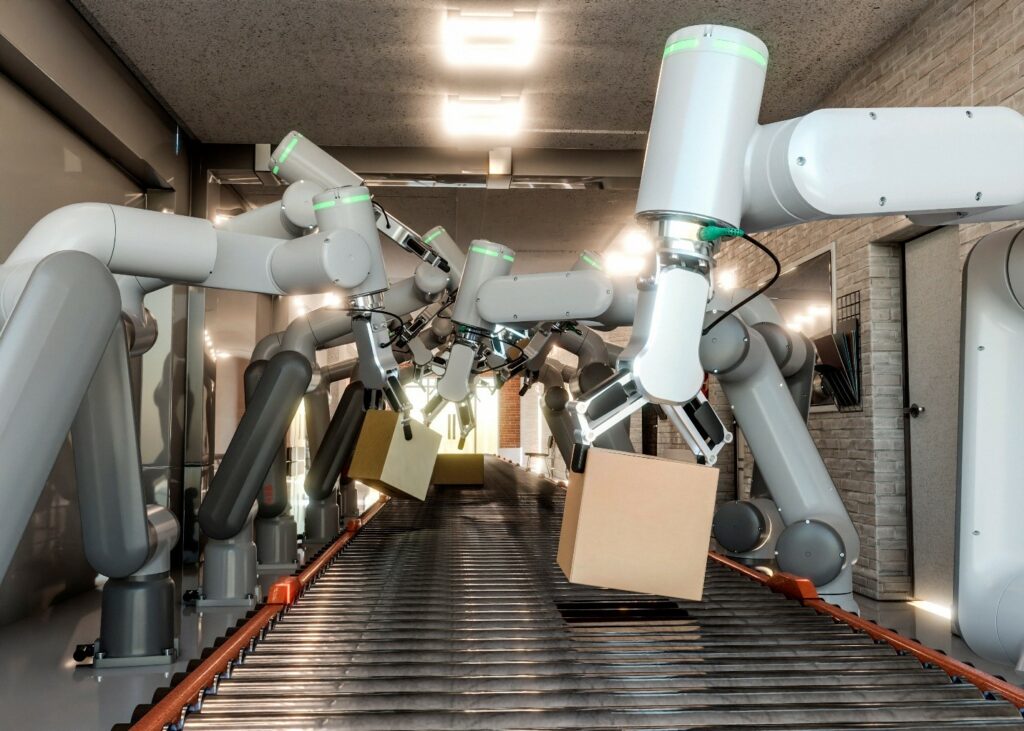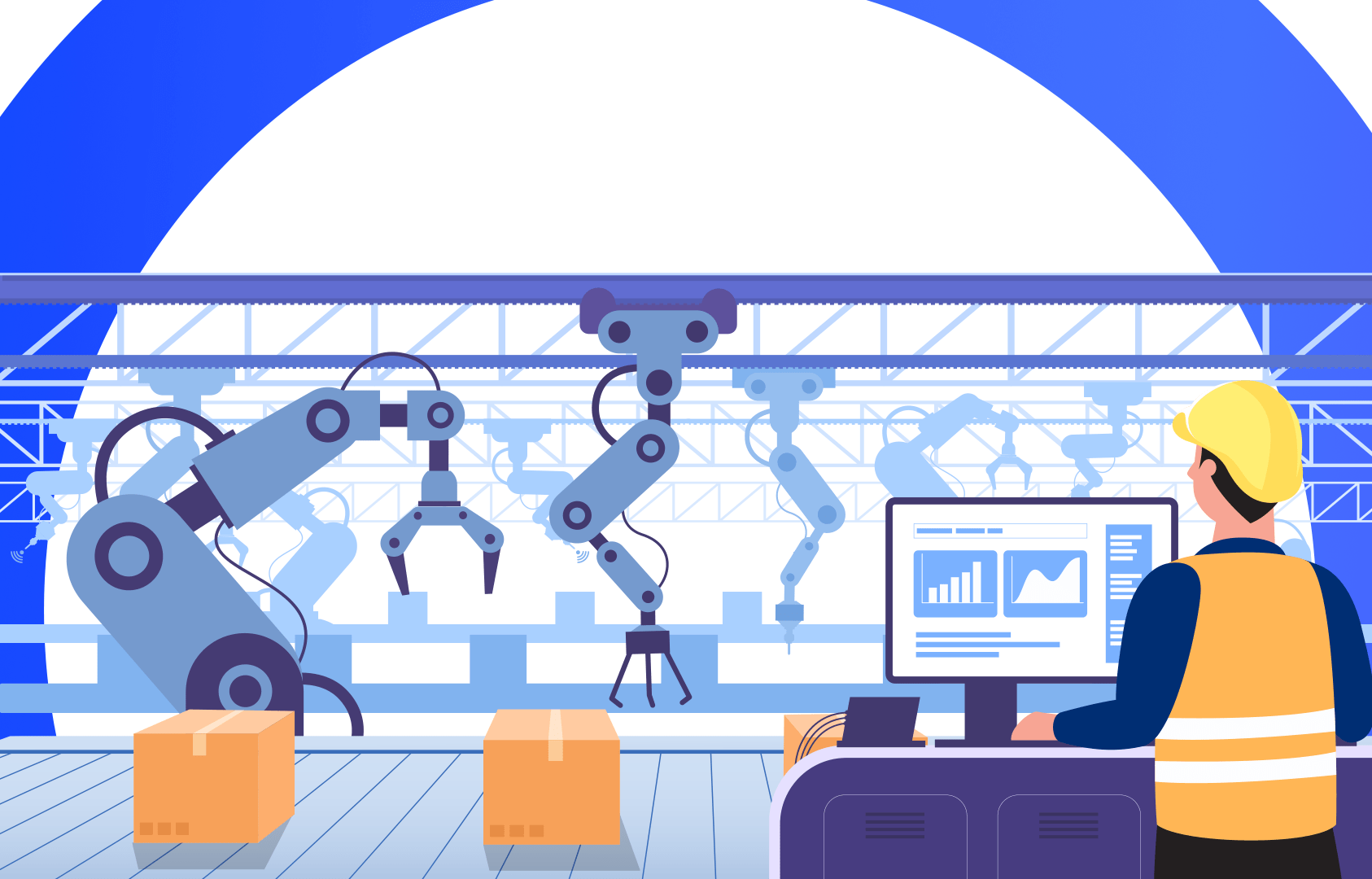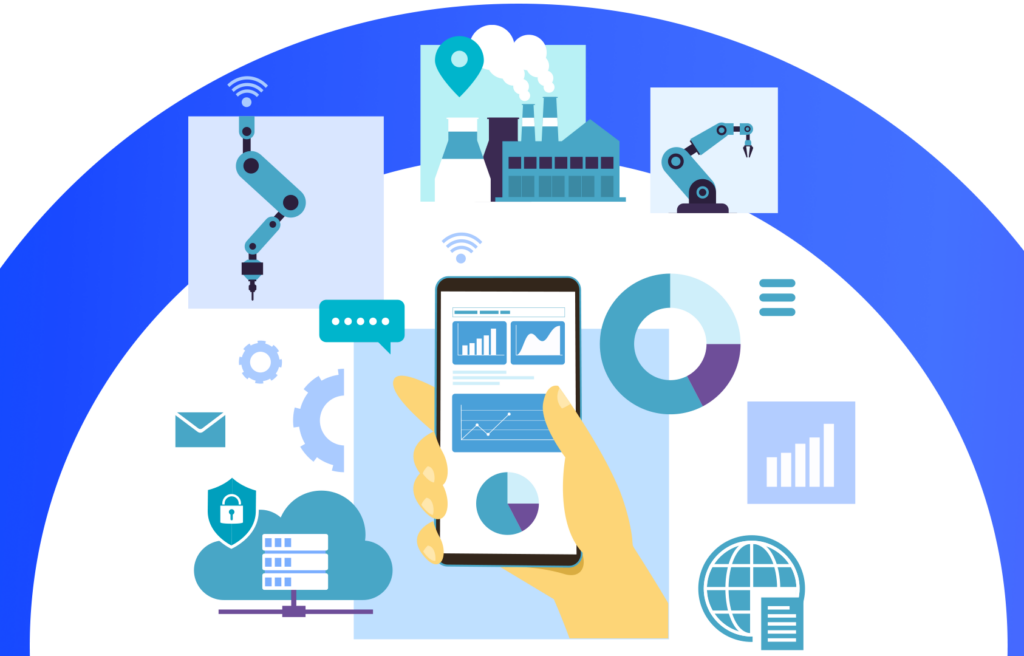As technology continues to evolve and become an integral part of the modern manufacturing industry, it’s becoming clear that Industry 4.0 is a reality that cannot be ignored. Digital transformation in the industrial landscape is no longer an option but a dire need. Failing to do this could potentially lead to manufacturers’ downfall, as it is a huge risk of being wiped out from the cut-throat and competitive industry scene. Smart factories make use of agile technologies and tools such as machine learning, industrial analytics, industrial IoT, Overall Equipment Efficiency (OEE), and more to integrate their capabilities into a factory.
The evolution from traditional to smart factories
What are smart factories?
Smart factories are known by their ability to rapidly adapt to the changing dynamics such as production requirements, optimized operations, and auto correction ability in real-time. Smart factories monitor, analyze and visualize industrial processes as a result of an interconnected machine networks, systems, and devices that can communicate with each other without any human intervention. This interconnectivity allows for improved communication between machines, operational efficiency, better decision making and higher product quality.

What are traditional factories?
Compared to smart factories, traditional factories mostly rely on manual labor and the old school mechanical technologies in their processes. The manufacturing processes mainly consist of linear or sequential series of steps, starting from the raw material towards the finished good or product.
A typical manufacturing process in any traditional factory setup may include the following steps:
- Raw material selection and procurement
- Processing or treatment of raw materials
- Assembly or production line operations
- Quality control checks
- Packaging and distribution
Although such factories have been effective over the past, their processes are heavily reliant on human intervention. This dependence can not only result in inconsistent levels of product quality but it also leads to increased operational costs in over time.
Downsides to a traditional factory
- Efficiency and productivity:
Since traditional manufacturing is reliant on humans, it involves time consuming manual tasks that are often repetitive, affecting the overall efficiency.
- Quality control:
Human quality controllers or inspectors may overlook defects detectable by machines. The reliance on manual inspections without advanced technologies can lead to product quality inconsistencies.
- Scalability
Expansion can also take some time in traditional factories. As it often entails hiring more staff or investing in larger areas, that is costly and also time consuming.
- Flexibility
It can be time consuming and require additional resources to adjust production lines or processes in traditional factories.
It is due to these limitations that have spurred the emergence of smart factories in the manufacturing sector. Leveraging automation, data analytics, and interconnected systems, these advanced facilities tackle challenges faced by traditional counterparts, fostering a more efficient and productive manufacturing landscape.
The road to smart factories
The ongoing transition towards smart factories isn’t sudden, it is gradual and more than just a passing fad; it has become integral for modern day manufacturers to stay competitive and in business.
Smart manufacturing can offer a host of solutions to these challenges:
- Increased efficiency: Automation and real-time monitoring can streamline strategies, minimize machine downtime, and optimize asset usage, leading to increased efficiency.
- Cost savings: Smart factories usually go through scheduled maintenance from time to time making predictive maintenance easier, reduced equipment downtime and operational costs.
- Improved quality: With enhanced control and monitoring throughout the factory production, product quality increases, while there are lesser chances of defects.
- Greater flexibility: Due to agile methods, adaptability to changing market trends increases.
- Enhanced safety: There are also lesser chances of risk, labor injuries and better protection for anyone at the production facility.
- Better decision-making: Machine learning and data analytics equip factory owners with actionable insight to take smarter and more informed decisions.
In the landscape of modern manufacturing, smart factories come out on top as the beacon of hope. While customer needs are constantly evolving, and manufactures face the demand for high-quality products, delivered at incredible speed and competitive pricing, smart factories stand ready to fulfil these changing demands. And while transforming into a smart factory can be a tiresome journey, initiating early steps towards your digital transformation is paramount.
To learn more about smart manufacturing and its impact on the modern world, read more.




